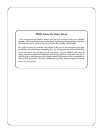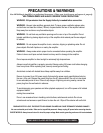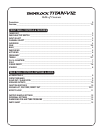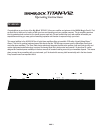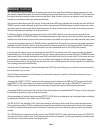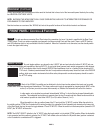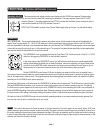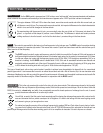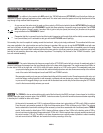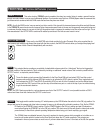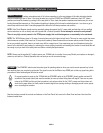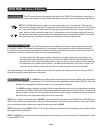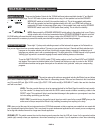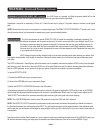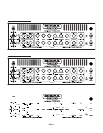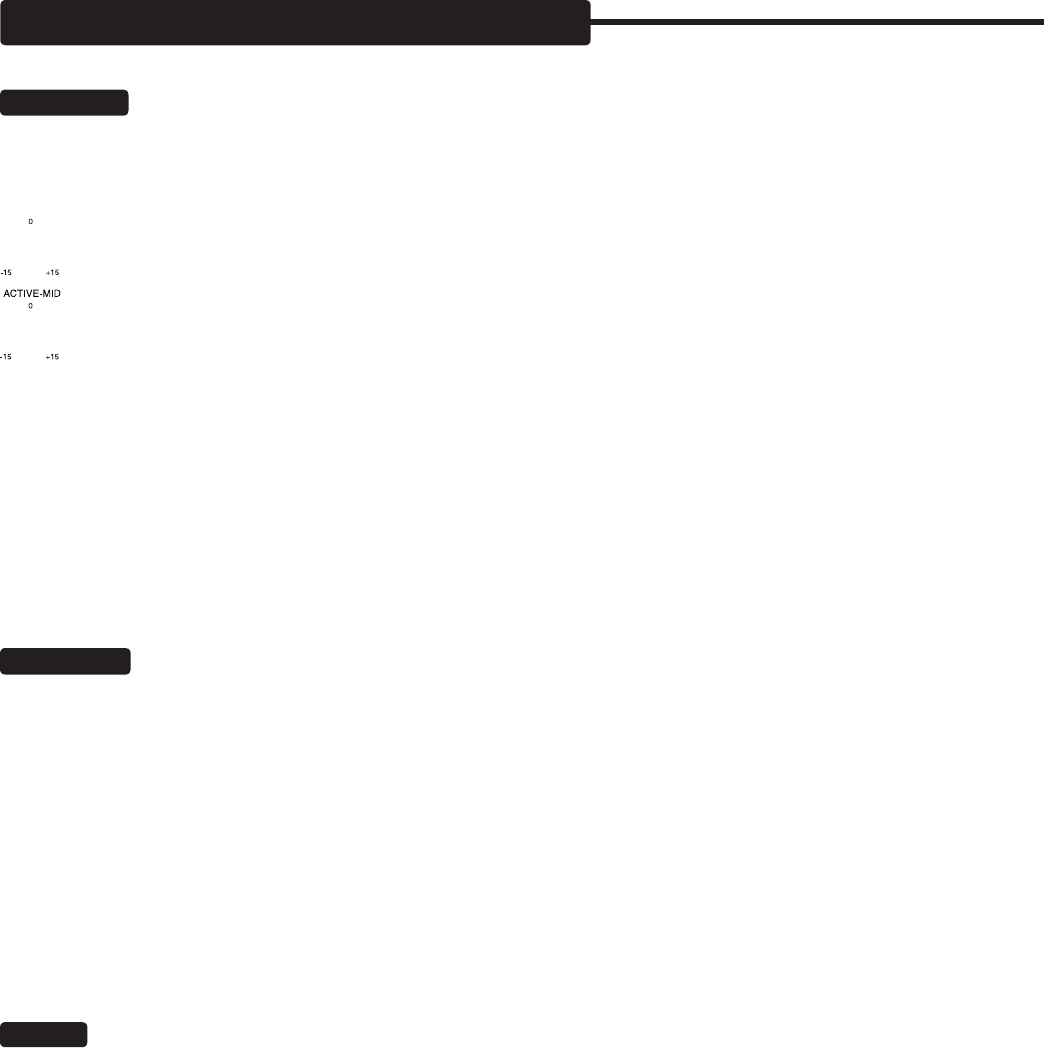
PAGE 6
ACTIVE MID:
In addition to the passive style MID control, the TITAN features an ACTIVE MID circuit that allows further ac-
centuation of specific midrange frequencies across a wide band. This wider band covers the spectrum from high bass/low mid all the
way through to high mid/low treble frequencies.
As you can see, this active circuit is made up of two controls; a GAIN control which is labeled ACTIVE MID that boosts and
cuts the selected region, and a FREQUENCY control that allows selection of a specific range to manipulate. The ACTIVE
MID is the gain or “amount” control. It provides 15db of gain in both plus (boost) and minus (cut) directions at the specific
range selected on the FREQUENCY control.
Remember that this is a powerful control and that certain frequencies cut through (high mid/low treble) or seem especially
loud (low mid/bass) so it is advisable to add gain with the ACTIVE MID control sparingly.
Set unwisely, this circuit is capable of creating sounds that are harsh, tubby or just simply unbalanced. This combined with the mas-
sive power available in the output section can spell real danger to speakers. We urge you to use this ACTIVE MID circuit with care
and most of all taste, to avoid damage to your ears and speakers. These two simple controls offer an incredible amount of shaping
power in a simple to use format. When combined with the other tone controls, virtually any sound you desire is available to you quickly
and with far less searching than when using multi-band equalizers. This simplicity is at the heart of the TITAN’S character…great
tone with minimal tweaking.
FREQUENCY:
This control determines the frequency range that the ACTIVE MID control will cut or boost. As mentioned earlier, it
covers a broad range that sweeps from the low midrange region to the lower treble frequencies. The control sweeps from 200Hz on
the low side to 2Khz on the high side - with 340 Hz riding the center, straight up at 12:00 on the control. This sweepable band gives
you pinpoint shaping power over the broad and usable midrange spectrum and also allows some overlap at the extreme
ends of the control with the adjacent broad band BASS and TREBLE controls.
May we again remind you to use care and taste when dialing with this powerful control. Some frequencies stick out or cut
more than others, making it possible to add unwanted, unpleasant and even dangerous, peaks or blow unbalanced holes
in your sound. We suggest dialing in your sound with the standard tone control array first and then using the ACTIVE MID
circuit to fine-tune and subtly enhance your sound.
TREBLE:
The TREBLE is also an active shelving style control like that found in the BASS and again, it was chosen for its ability to
radically shape the upper harmonic region. Like the BASS, it also has a center Q point with harmonics above and below responding
in harmony as it is dialed for either cut or boost.
As the control is increased past 12:00, it produces a 6db per octave rise in gain starting at 723Hz until +20db is reached.
From this point, gain remains constant at +20db for all frequencies above 723Hz all the way out to 20Khz. This scheme
lends a sweetness of sound while retaining all the necessary cut and focus associated with a traditional passive TREBLE
control. As this control is dialed below 12:00, it begins a 6db per octave cut from 3.2Khz to the shelving point at 723Hz,
where it continues to attenuate all frequencies above 723Hz until - 20db is reached where cut gain remains constant until
the control reaches 7:30 (off). The ability to cut these frequencies more radically makes it possible to obtain incredibly
rich and warm old-school R&B and Jazz sounds that rival any recordings of the day.
FrONT PANeL: CONTrOLs & FeATures (Continued)



